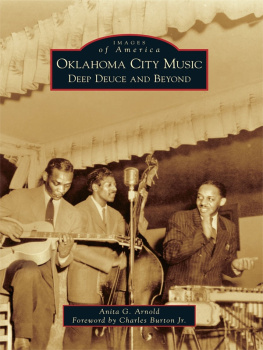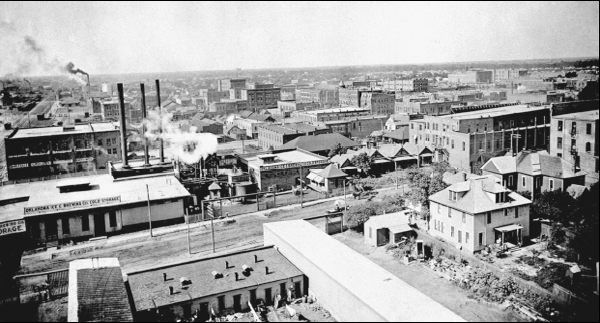There are several individuals who I would like to thank for the many contributions of photographs, time, and talent without which this work would not be possible. I am in debt to Anita Arnold, executive director of Black Liberated Arts Center for providing important images and history of Deep Deuce and the contacts that she pointed me to that enabled me to locate a rich array of persons to include within these pages. David Sellers, editor and publisher of the Capitol Hill Beacon , opened his files of photographs and early history that vividly depicted the development of south Oklahoma City. Ann Amme, owner of the Red Stone Inn Bed and Breakfast, allowed access to unpublished photographs and family history of Dr. Wyatt Slaughter for which I am grateful. I also wish to thank Leroy Parks for his memories of Deep Deuce and Gerald Harris for his information regarding his grandfather William T. Vivette. The folks at Nonnas, Avis, and Darla were very helpful with providing key information about their historic building, also Rand Elliott of Elliott and Associates for vital documentation about the Heierding Building. I wish to thank Larry and Beth Schwartz for providing personal family photographs; Dr. Bob L. Blackburn, executive director of the Oklahoma Historical Society; Laura Martin, Jennifer Towry, and Francie Helm of the Oklahoma Historical Society Research Library for their efforts toward this project; and Jim Gabbert of the state historic preservation office for providing access to important records relating to Deep Deuce, Bricktown, and Automobile Alley. I sincerely appreciate Chester Cowen, photographic archivist of the Oklahoma Historical Society, relying on his vast institutional memory of the collections to make available many photographs not published before and his extremely helpful assistant Kathy Gibbs who made countless searches for images located in obscure collections. I deeply appreciate Jaymie Lang for perusing the multitude of images, seeking out examples that would engage the reader, and providing a rich scenic pictorial history. And lastly, I want to thank Rachel Mosman for her passion for the project, her willingness to go the extra mile to bring out the richness of the images as the photographer had intended, for without her the project would not be possible.
INTRODUCTION
Oklahoma City quite literally was created in one day. On Monday at high noon April 22, 1889, with the roar of cannon and pistol fire, home seekers from all over the United States and beyond made a mad dash to stake a claim in the hard packed virgin prairie soil that would become home. They made the Run of 1889 by foot, speedy horse, by buggy or bicycle, if you can imagine, and by railroad, all for the chance for a new life in what would one day become Oklahoma.
Oklahoma City is located on what is known as the Osage Plains, which is an extension of the central lowlands region of the United States. The topography of the area can be described as level, fertile land with sufficient rainfall to aid in crop production, and at an elevation of 1,214 feet above sea level it was considered by the Santa Fe railroad as suitable for town site development.
Almost in the center of the unassigned lands was a rail stop known as Oklahoma Station. There the Santa Fe railroad had built a station along with water tank and a few outbuildings in 1887. Within minutes after the signal had created this surge of humanity, workers from the Santa Fe, most notably William L. Couch, stepped off the station platform and staked a claim, a claim that would be contested for several years.
By nightfall, some 5,000 to 7,000 persons occupied land near the Santa Fe depot. A tent city stretching as far as the eye could see. Within days of the opening, wooden structures were replacing canvas and all manner of business enterprise began to take root as well as houses of worship. Another aspect of the new town was the lack of authorization to organize a municipal government. These enterprising pioneers did not let that hinder their efforts, so a provisional government was formed with Couch elected as the first mayor.
Within its first year as a town, brick structures were appearing. The rival city of Guthrie, the territorial capital, was losing citizens to the more progressive Oklahoma City, and according to the Daily Times-Journal published in Oklahoma City, brick frontage was double that of Guthrie. By 1894, Guthrie had a slight edge in population, but Oklahoma City had far more business structures and material wealth. By the mid-1890s, Oklahoma City was becoming a metropolitan wholesale and manufacturing center. With the addition of the Choctaw, Oklahoma and Gulf Railroad (later the Rock Island) in 1895, the city now had an eastwest route to the Santa Fes northsouth system. Although initially the additional railway caused a recession, certain city leaders pushed forward to the point that within a decade the city would have six railroads bisecting the community, making it the distribution center of Oklahoma Territory.
Two sectors of the growing city would trace their roots to the end of the 19th century, first the manufacturing district (later to be dubbed Bricktown) and second the suburb of Capitol Hill would be founded a mile south of the main business district of Oklahoma City.
Deep Deuce would come of age with the rise of blues and jazz music during the 1920s, developing a central business district east of downtown for the growing African American population of Oklahoma City.
With the advent of the horseless carriage a new mode of transportation was created. By 1910, several commercial automobile dealers set up business along Broadway, north of Fifth Street. Broadway, with a 100-foot right-of-way, was platted as the widest northsouth street in the original 1889 town site plat.
Each of these sectors of the vibrant community has had a unique development and positive contribution to the history of Oklahoma City.
One
OKLAHOMA CITY ON THE RISE

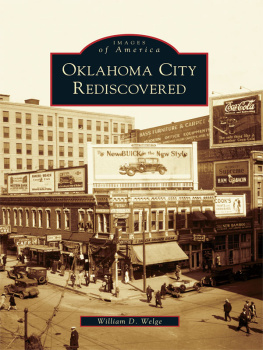

![Waring Todd - Oklahoma City: [what the investogation missed-- and why it still matters]](/uploads/posts/book/242598/thumbs/waring-todd-oklahoma-city-what-the.jpg)
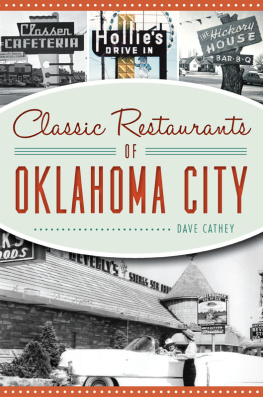
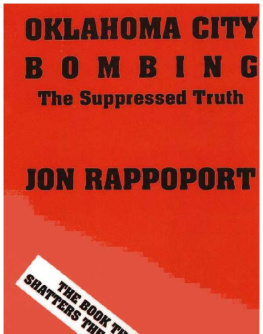
![Gumbel Andrew - Oklahoma City : [what the investogation missed-- and why it still matters]](/uploads/posts/book/98695/thumbs/gumbel-andrew-oklahoma-city-what-the.jpg)
